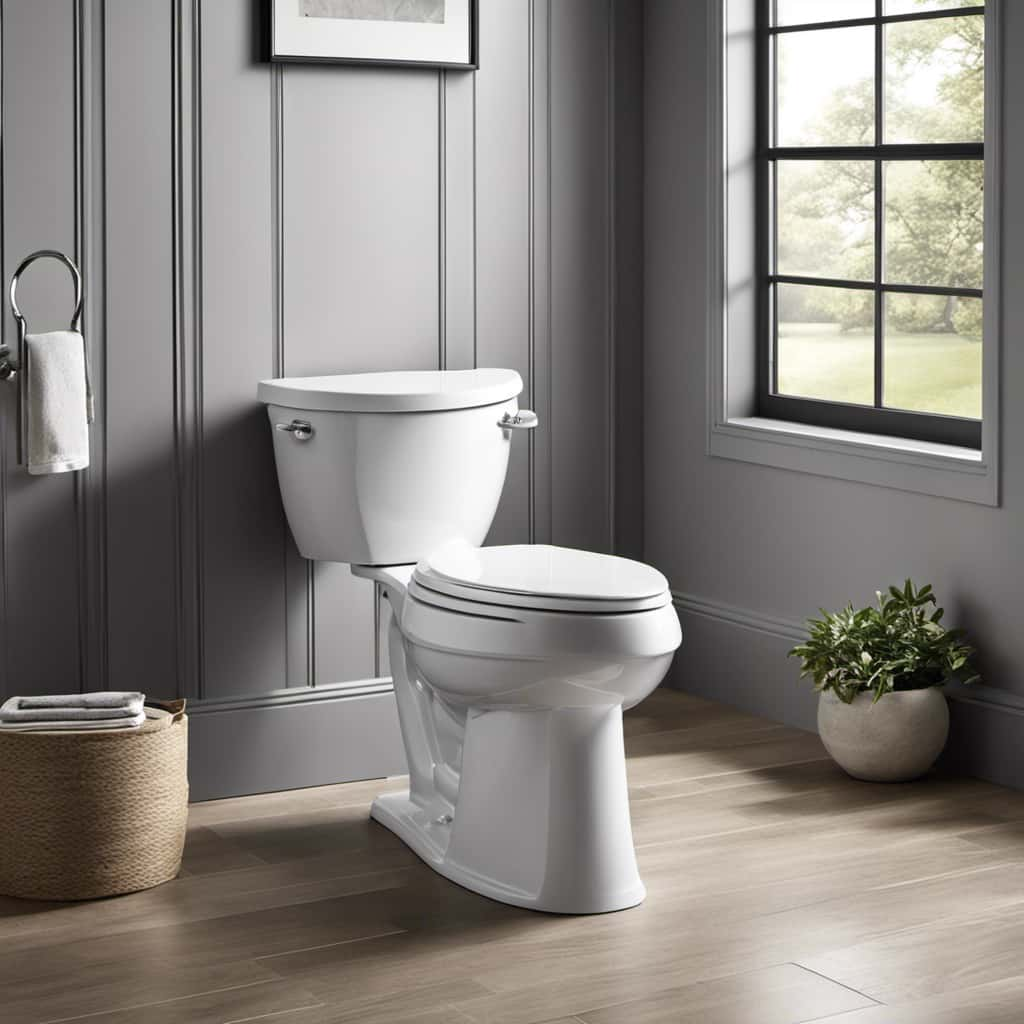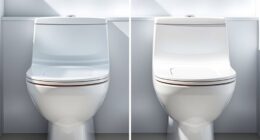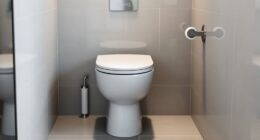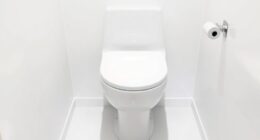Did you know that 90% of toilet clogs can be fixed with a plunger? We’re here to help you master the art of plunging toilets with precision.
In this article, we’ll explore different types of plungers, teach you the proper technique, and share common causes of toilet clogs.
Plus, we’ll provide tips to prevent future clogs and troubleshoot any lingering issues.
Get ready to plunge like a pro and bid farewell to toilet troubles.

Key Takeaways
- Different types of plungers are available for different types of drains, such as cup plungers for sinks and bathtubs, flange plungers for toilets, and accordion plungers for stubborn clogs.
- Proper plunger technique involves positioning the plunger over the drain opening, applying downward pressure to create suction, using vigorous strokes in a steady rhythm, and repeating if necessary until the water drains freely.
- To prevent toilet clogs, avoid flushing excessive toilet paper, foreign objects, and cotton balls. Regular cleaning, hot water flushing, and proper flushing technique can help maintain a smoothly functioning toilet.
- Troubleshooting clogged toilets can involve using a plunger, hot water and dish soap, or an auger or snake to dislodge or remove the blockage. Natural remedies like baking soda and vinegar or commercial drain cleaners can also be used. In more severe cases, mechanical tools or professional assistance may be required.
Types of Plungers
There are three main types of plungers commonly used for unclogging toilets. Each type has its own design and purpose, making it essential to choose the right plunger for the job.
The first type is the cup plunger, which features a flat bottom and a wide mouth. It’s best suited for flat surfaces, such as sinks or bathtubs.
The second type is the flange plunger, which has an extended rubber lip or flange at the bottom. This design is specifically made for toilets, as the flange creates a tighter seal around the drain opening.
Lastly, there’s the accordion plunger, which has a bellows-like shape. This unique design allows for a stronger suction, making it effective for stubborn clogs.
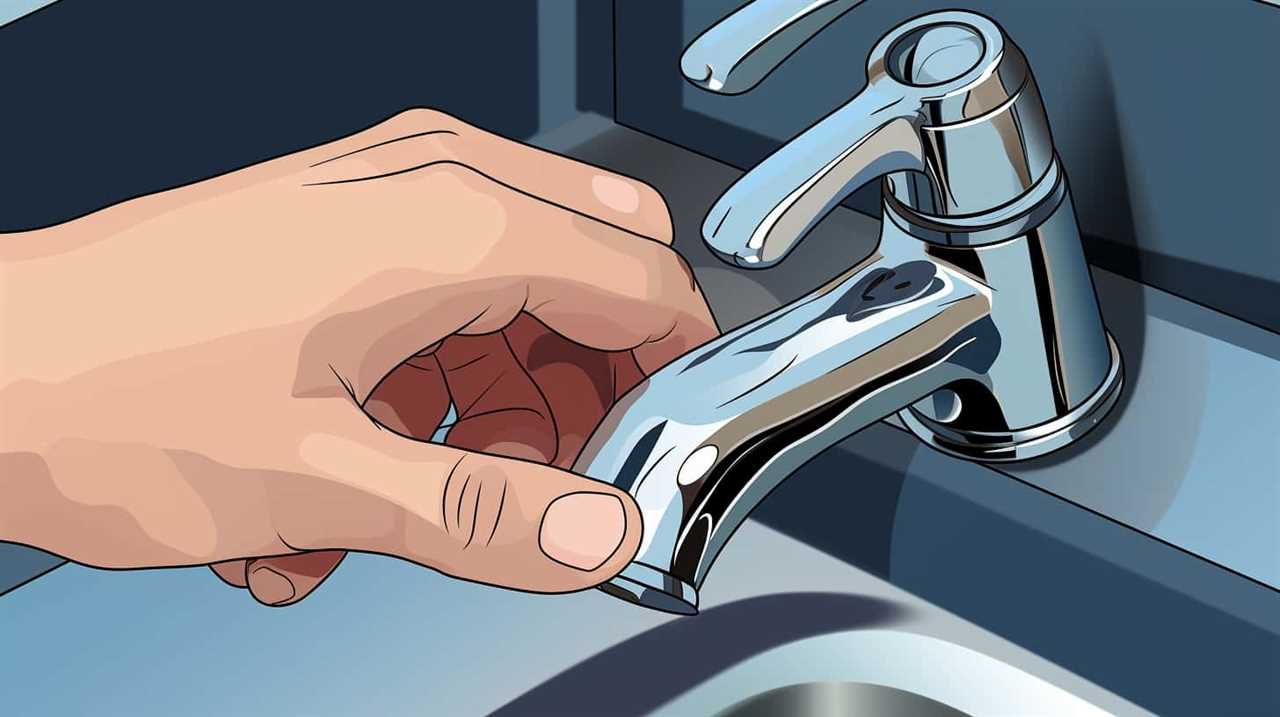
When choosing the right plunger, consider the type of drain and the severity of the clog. Selecting the appropriate design will ensure better results and a faster unclogging process.
Proper Plunger Technique
To achieve optimal results when unclogging a toilet with a plunger, we recommend using a firm and consistent plunging motion. This technique ensures that a strong force is applied to dislodge the clog effectively. Here are some effective plunging techniques to master:
- Position the plunger: Place the plunger over the drain opening, ensuring a tight seal is formed.
- Apply downward pressure: Push the plunger down firmly, creating a suction effect.
- Use vigorous strokes: Move the plunger up and down vigorously, maintaining a steady rhythm.
- Repeat if necessary: If the clog persists, continue plunging until the water starts to drain freely.
In addition to mastering the plunging technique, proper plunger maintenance and care are essential to ensure longevity and effectiveness. Here are some tips:
- Clean after use: Rinse the plunger thoroughly with warm water and soap to remove any debris.
- Store properly: Store the plunger in a dry and well-ventilated area to prevent mold and mildew growth.
- Replace when needed: Inspect the plunger regularly and replace it if the rubber cup becomes worn or damaged.
Common Toilet Clog Causes
When dealing with a plunger toilet, understanding the common causes of toilet clogs is crucial to effectively unclogging the drain. Here are the top culprits behind toilet clogs:

- Excessive Toilet Paper: Using an excessive amount of toilet paper can lead to clogs as it can accumulate and block the drain.
- Foreign Objects: Flushing items like cotton balls, feminine hygiene products, or baby wipes can cause clogs as they don’t dissolve easily.
- Hard Water Deposits: Mineral deposits from hard water can build up in the pipes over time, narrowing the passage and causing clogs.
To prevent toilet clogs and maintain a smoothly functioning toilet, it’s important to practice good toilet maintenance. This includes:
- Regular Cleaning: Regularly clean the toilet bowl and flush it with hot water to remove any buildup.
- Proper Flushing Technique: Teach everyone in your household to flush only toilet paper and waste down the toilet.
- Plumbing Inspection: Periodically inspect the plumbing system to identify any potential issues and address them promptly.
Tips for Preventing Toilet Clogs
To prevent toilet clogs and maintain a smoothly functioning toilet, we can implement a few simple tips and practices.
Regular maintenance is key to avoiding clogs and costly repairs. One of the most effective toilet unclogging hacks is to be mindful of what you flush down the toilet. Avoid flushing items such as cotton balls, wipes, or excessive toilet paper. These can easily lead to blockages.
Additionally, DIY toilet maintenance can include regular inspections of the tank and bowl for any signs of leaks or cracks. Ensuring proper water flow and pressure can also help prevent clogs.

By following these tips and incorporating DIY toilet maintenance into your routine, you can significantly reduce the likelihood of experiencing clogs and keep your toilet in optimal condition.
Now, let’s move on to troubleshooting clogged toilets.
Troubleshooting Clogged Toilets
Before diving into troubleshooting clogged toilets, let’s start by discussing common signs and symptoms that indicate a potential blockage. These include slow draining, gurgling sounds, and water levels rising higher than normal.
Once you’ve identified a clog, it’s important to take immediate action to prevent a toilet overflow. Here are some effective DIY toilet unclogging techniques:
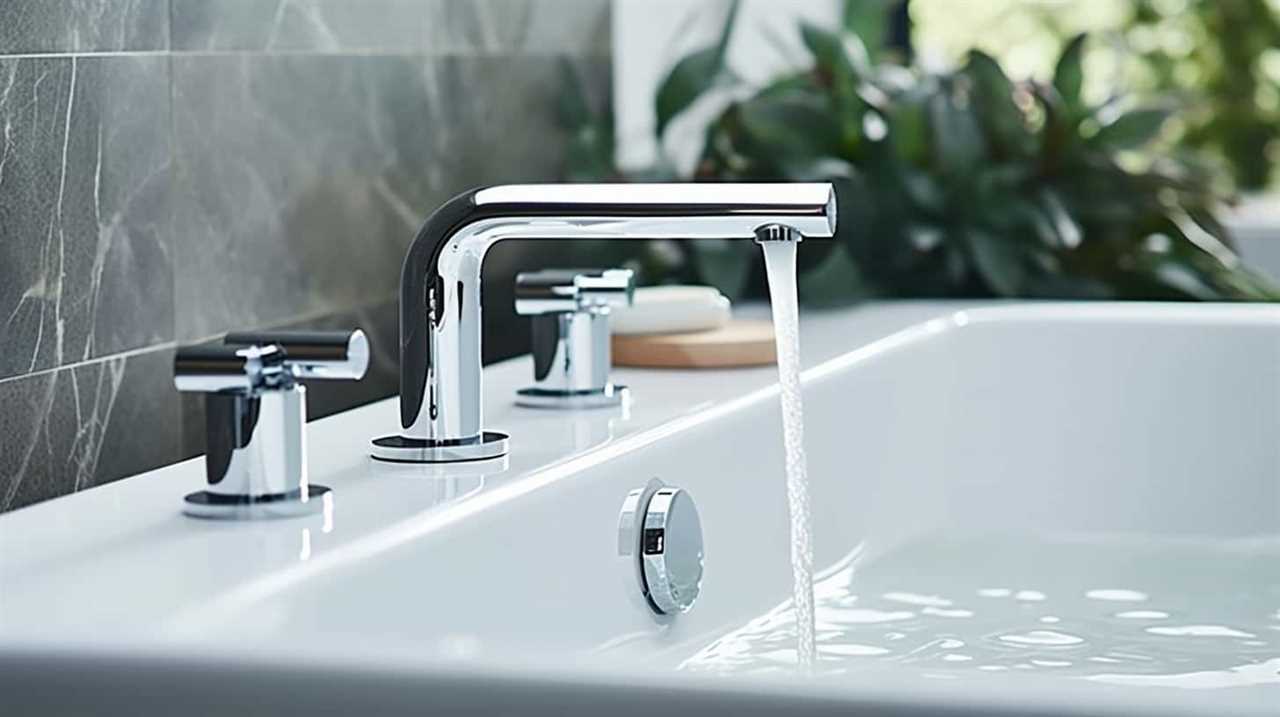
- Plunger Method: Use a plunger to create suction and dislodge the blockage. Ensure a tight seal around the drain and push and pull with forceful strokes.
- Hot Water and Dish Soap: Pour a generous amount of dish soap into the toilet bowl, followed by hot water. Let it sit for a few minutes, and then flush to see if the clog clears.
- Baking Soda and Vinegar: Mix one cup of baking soda with one cup of vinegar and pour it into the toilet. Allow it to fizz for a few minutes, and then flush.
Frequently Asked Questions
How Often Should I Replace My Plunger?
We should replace our plunger regularly to ensure its effectiveness. Signs of a worn out plunger include cracking, splitting, or loss of suction. It’s important to consider toilet plunger alternatives as well.
Can Using a Plunger Damage My Toilet?
Using a plunger incorrectly can potentially damage the toilet. It’s important to know proper technique and avoid excessive force. Preventing toilet clogs requires understanding common causes, such as flushing non-flushable items.
What Should I Do if My Toilet Is Still Clogged After Using a Plunger?
If the toilet remains clogged after using a plunger, we recommend considering alternative methods such as using a drain snake or calling a plumber for professional assistance.
Are There Any Alternatives to Using a Plunger for Unclogging a Toilet?
When faced with a clogged toilet, there is an alternative to using a plunger. A toilet auger, a tool specifically designed for unclogging toilets, can be used. Additionally, chemical drain cleaners are another option.
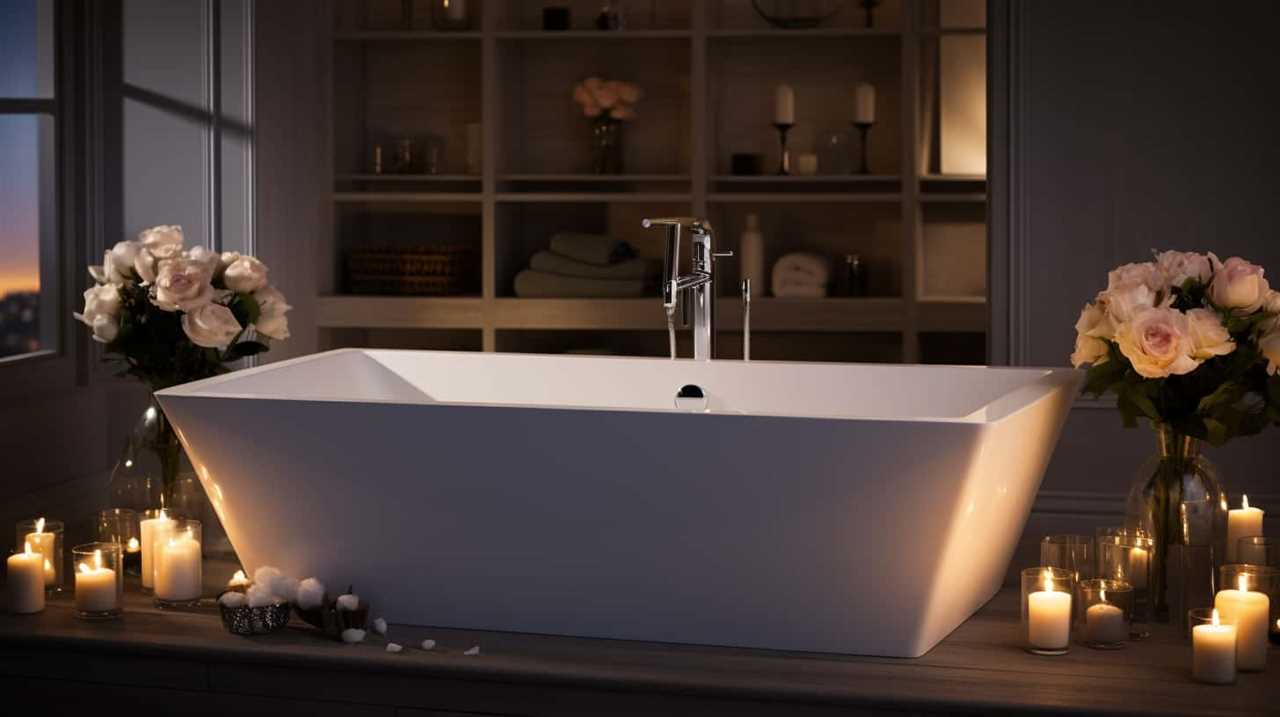
How Do I Clean and Sanitize My Plunger After Use?
Proper plunger maintenance is crucial for effective cleaning. To sanitize, soak the plunger in a mixture of hot water and bleach for 30 minutes. Rinse thoroughly and air dry. Repeat regularly for optimal hygiene.
Conclusion
In conclusion, mastering the technique of using a plunger can save you from the hassle and expense of calling a plumber.
By choosing the right type of plunger and following the proper technique, you can effectively unclog your toilet.
Remember, prevention is key, so be mindful of what you flush down the toilet to avoid future clogs.
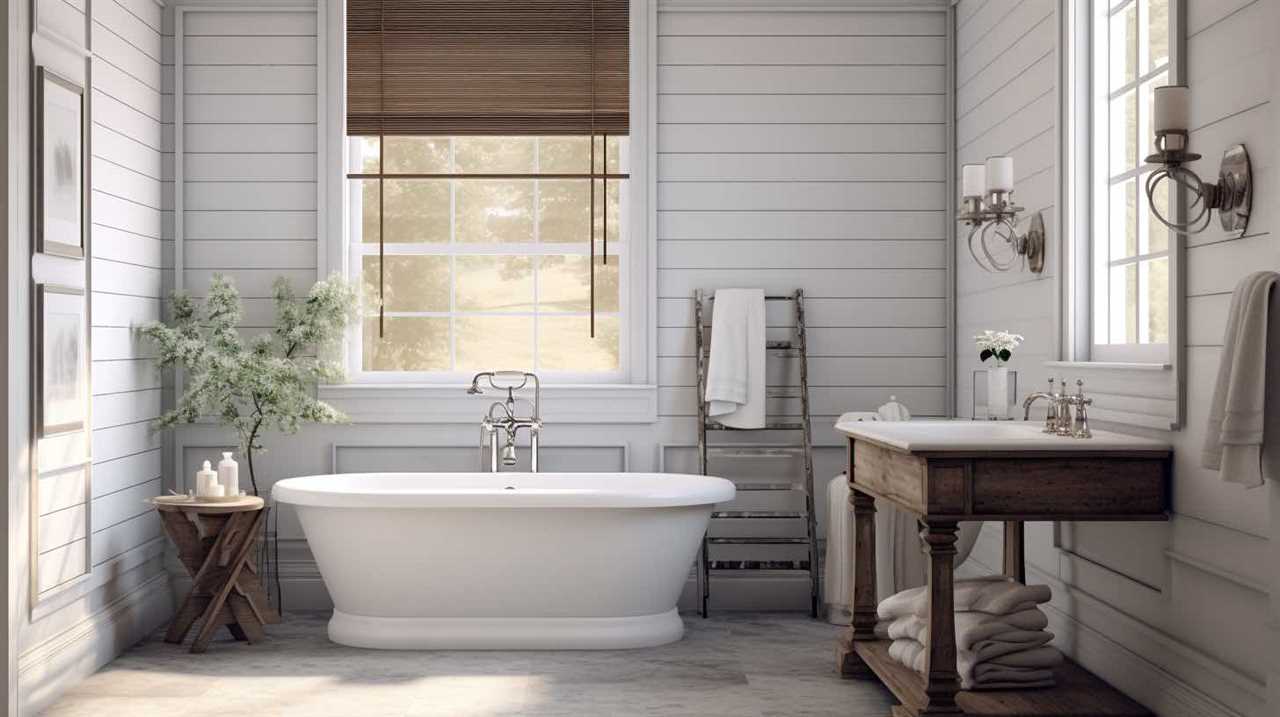
For example, one homeowner experienced a stubborn clog caused by flushing excessive amounts of toilet paper, but with the right technique, they were able to quickly resolve the issue themselves.




